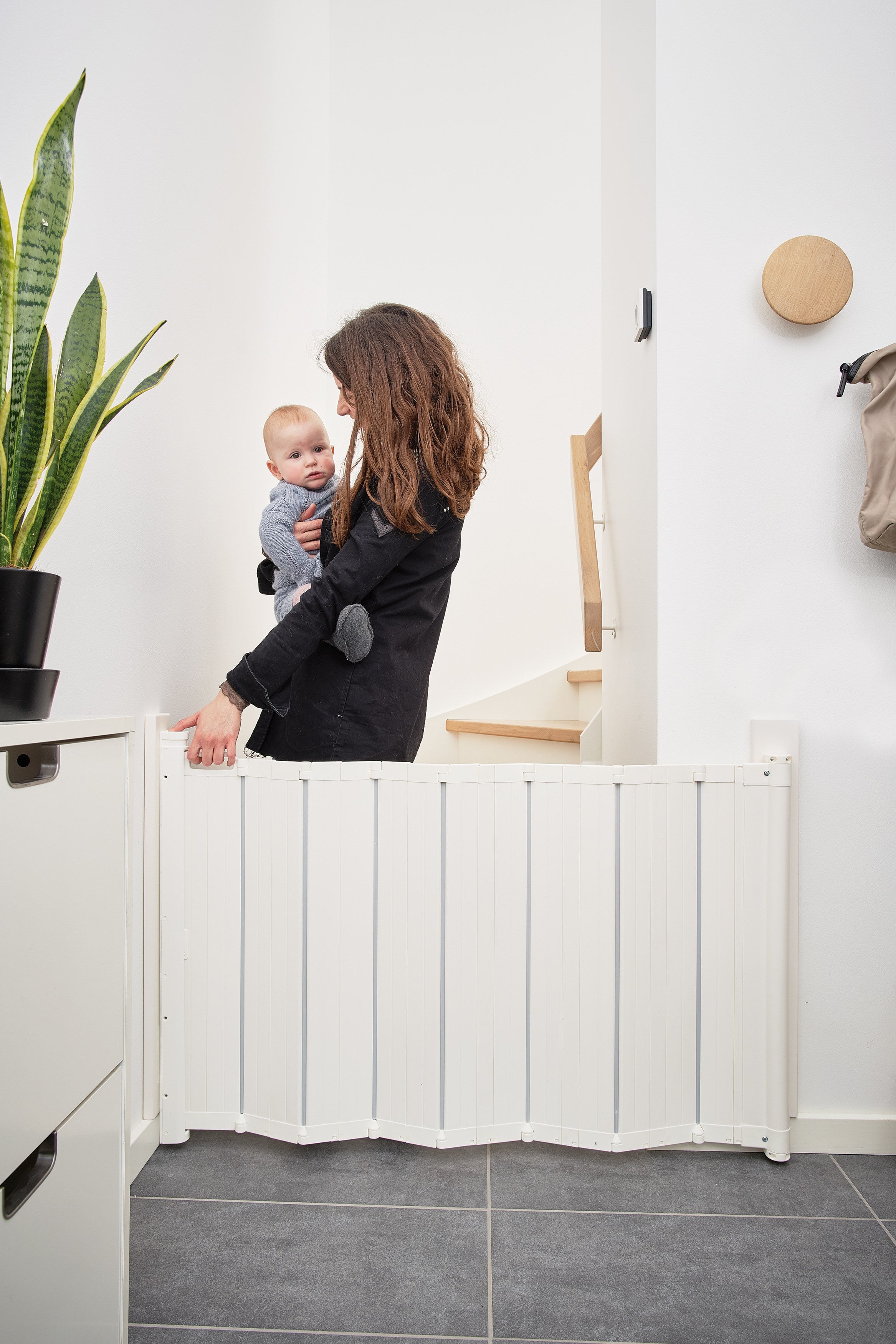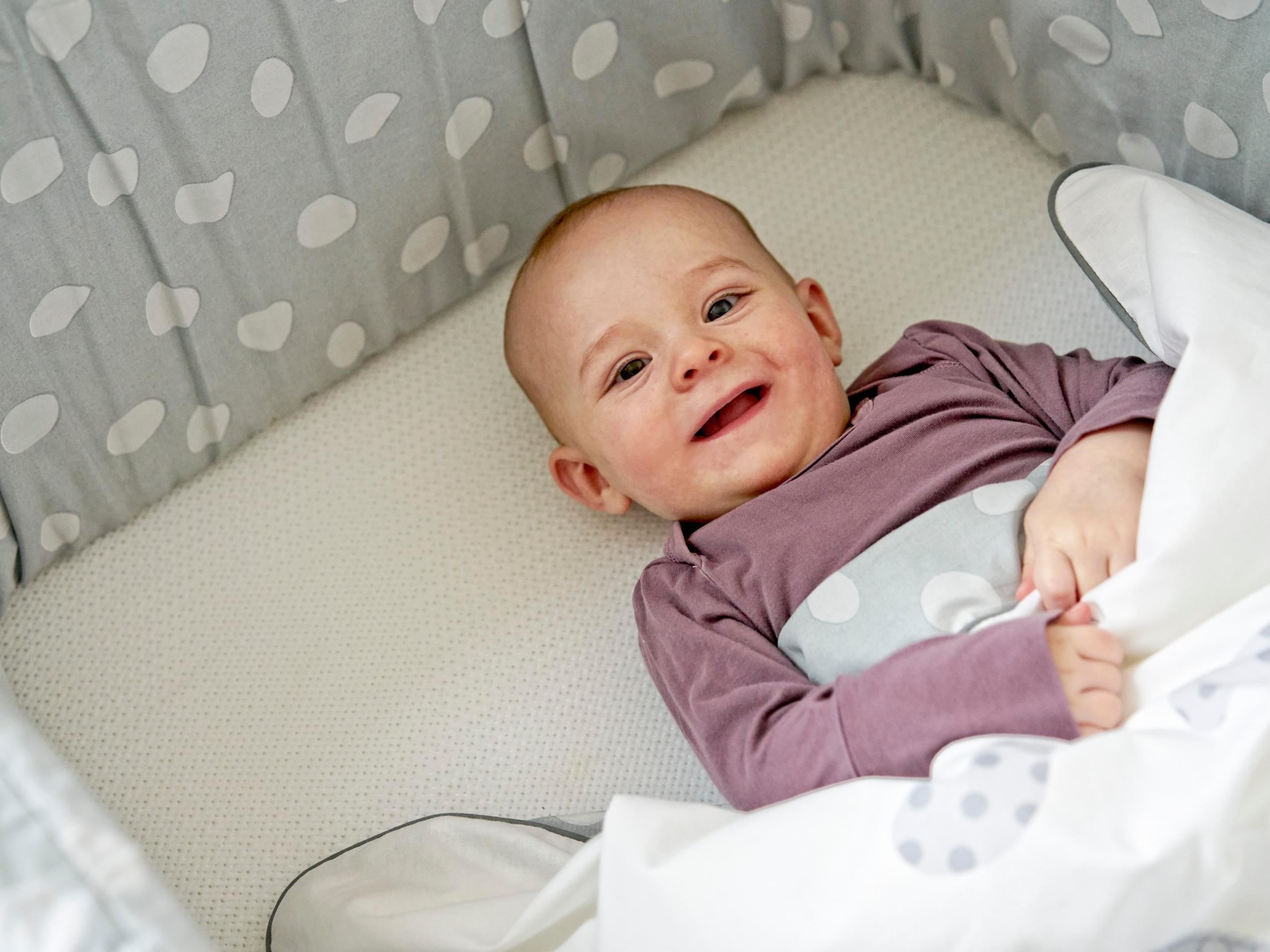
Test, test, test!
When we at BabyDan say that we want to be a leader in child safety products, we mean it. That is why we do our utmost to make sure our products are among the safest on the market, so they can help you take care of your child.
To achieve this, our products undergo comprehensive and vigorous testing in our BabyDan Test Centre, so you and your child can feel comfortable using our products.
BabyDan safety gates are some of the world's safest safety gates - and we work every day to make sure they stay that way. We therefore test our gates both at our own BabyDan Test Centre and at external European and internationally accredited testing institutes such as TÜV and Bureau Veritas.
Below you can read more about what tests we use on our safety gates and why.
We also develop and manufacture small home safety products for the home. Additionally, we sell furniture, textiles and accessories for children's rooms and all sorts of baby products. In short: we are one of the world's leaders in safety products for children aged 0-3 years. And having spent more than 75 years in this industry, we feel confident to call ourselves one of the foremost experts in child safety.

Why are we testing our safety gates?
We test all of our safety gates to make sure they help prevent your child from getting hurt at home. We also test because we are a responsible manufacturer of safety gates, and we want to be certain that you are getting the best help to take care of your child.
When we test our gates, we test based on the testing standards used by the authorities. These are testing standards that European safety gates must undergo in order to comply with safety standards EN 1930 and EN 71.
When a safety gate complies with one of the safety standards, you can be absolutely confident that the gate will help keep your child safe. You can be sure of this because you know that the safety gate has undergone a variety of tests to investigate whether the gate can withstand different scenarios from daily life.
The safety standards are based on thousands of statistics about children, their size, weight and how they behave. That is why we use the current European and American tests, to make sure that we always offer you the safest and best safety gate.

BabyDan test center 8 tests
1. Basketball Test
If your child runs into the safety gate, the gate must stay upright. It might also occur that the child drives into the gate on his or her balance bike or toy car, and rams into it at a high speed. No matter how and at what velocity the child bumps into the safety gate, it must be able to withstand that collision.
We therefore test all of our safety gates with a Basketball Test, which entails a basketball weighing 10 kilos bumping hard into the gate 28 times. We do this to investigate whether the gate can be toppled over or dislocated. We test several different places on the gate, so we are certain that the gate has no weak points.
2. Rattle Test
Children are curious and love to explore and learn. Your child will therefore almost certainly be curious about what is on the other side of a safety gate. This can lead the child to shake the gate and this is naturally something the gate should be able to withstand.
A Rattle Test replicates the motions of a child who is shaking and pulling on the safety gate. The test instrument simulates a hand shaking the gate for 8 minutes. The simulated shaking of the gates is carried out with special equipment. So we can be certain that the safety gate can handle all the pushes, pulls and shakes that it may be exposed to in the course of any given day.
3. Push-Pull Test
Some kids are little escape artists who will make every attempt to get to the other side of the safety gate. At the BabyDan Test Centre, we therefore test all our gates with a Push-Pull Test, which simulates a child trying to get out.
The test mimics a child pulling as hard as they can on the gate. The robot pushes with 14 kilos and repeats the motion back and forth 10,000 times. It takes about a day to complete the test. We use this test to make sure that the child cannot dislodge the safety gate in any way.
4. Test for spacing between bars
Kids are inquisitive and will probably examine a safety gate by sticking their hands through the bars. It can be dangerous if a child is able to get their body through the bars, and especially if the child gets his or her head stuck between the bars.
We consequently test the spacing between bars on all BabyDan safety gates. So we can be certain that the child cannot get in between the bars and risk getting stuck. The test is performed with a special cone shaped instrument and tested with a force of 30N.
5. Finger entrapment
Getting fingers caught is always unfortunate. Unfortunately, getting little fingers caught is something that most children will experience at some point. It can be quite painful and could be dangerous.
We want to prevent your child from getting his or her fingers caught in our safety gates. To prevent this from happening, we test for whether it is possible for little fingers to get caught in our safety gates. We test the gate at all angles, so we are absolutely sure that no little fingers will be pinched.
6. Foot Step Test
Whether you are using a safety gate in a doorway, hallway, at the bottom of the stairs or at the top of the stairs, it is imperative that your child cannot get a foothold and then crawl over the gate.
That is why we test our safety gates with a Foot Step Test, which ensures that a child cannot stand on the baseplate and crawl over. The height of the safety gate is at least 65 cm, so you can rest assured that your child will not be able to climb over it.
7. Small Parts Test
Most parents know that children tend to put everything into their mouths. It is therefore extremely important that your child cannot put things into his or her mouth that might get lodged in the throat. This can pose a risk of suffocation. All BabyDan safety gates are therefore tested to see whether small parts can be pulled off the gates.
8. Tests for hazardous substances
When you have young children in the home, there should not be anything within reach that contains harmful chemicals. Young children will often suck and bite new things as a way of exploring their surroundings. They will do this with almost anything, from their hands to a toy. When setting up a safety gate, the child will almost certainly want to explore the gate to determine what it is. For this reason, we always test our safety gates for hazardous substances. It is crucially important that your child does not ingest any undesirable and health hazardous substances when he or she is sucking on the gate. It is practically unavoidable that your little one gets the notion to try sucking and biting it - and of course we need to make allowances for that. Our BabyDan safety gates are so safe that your child can suck on them without ingesting any harmful chemicals.
